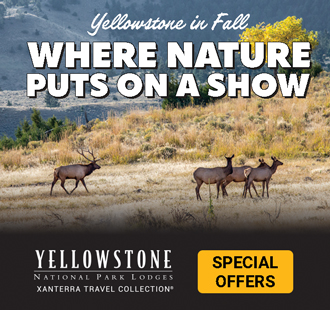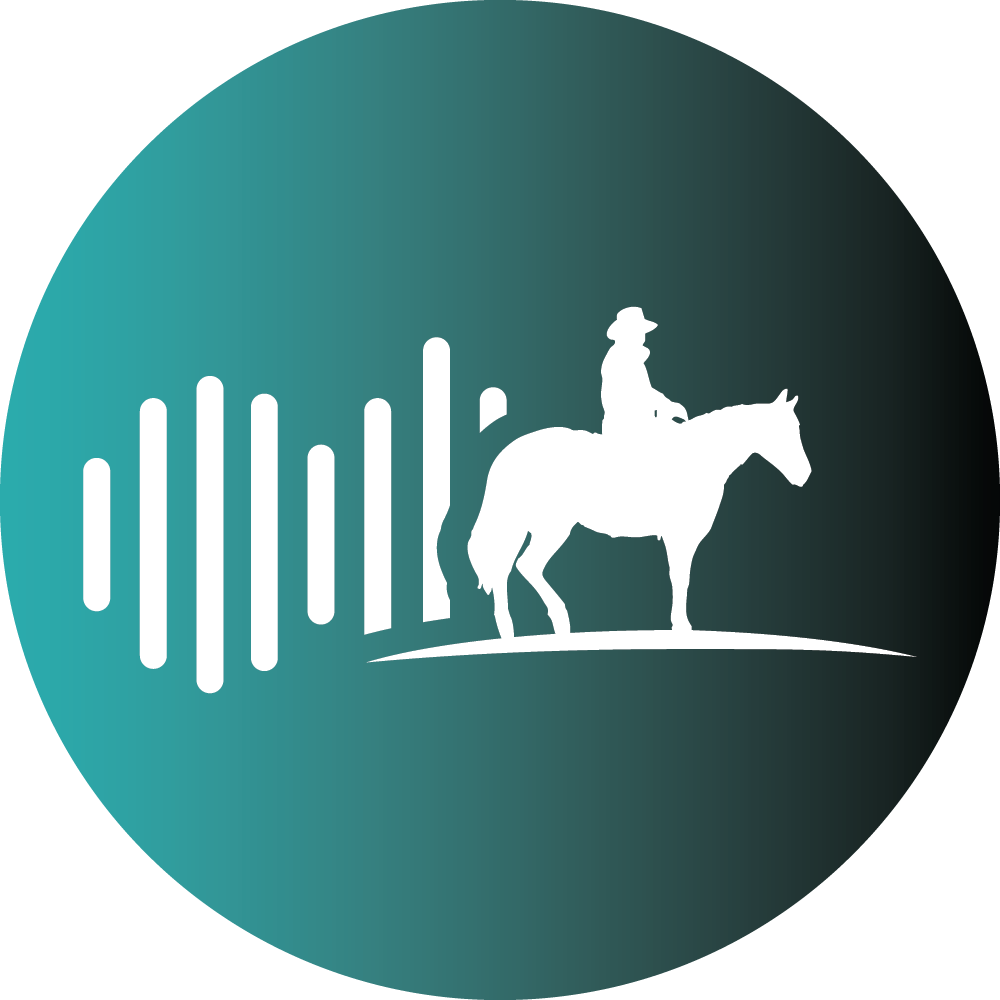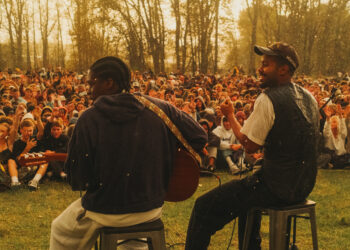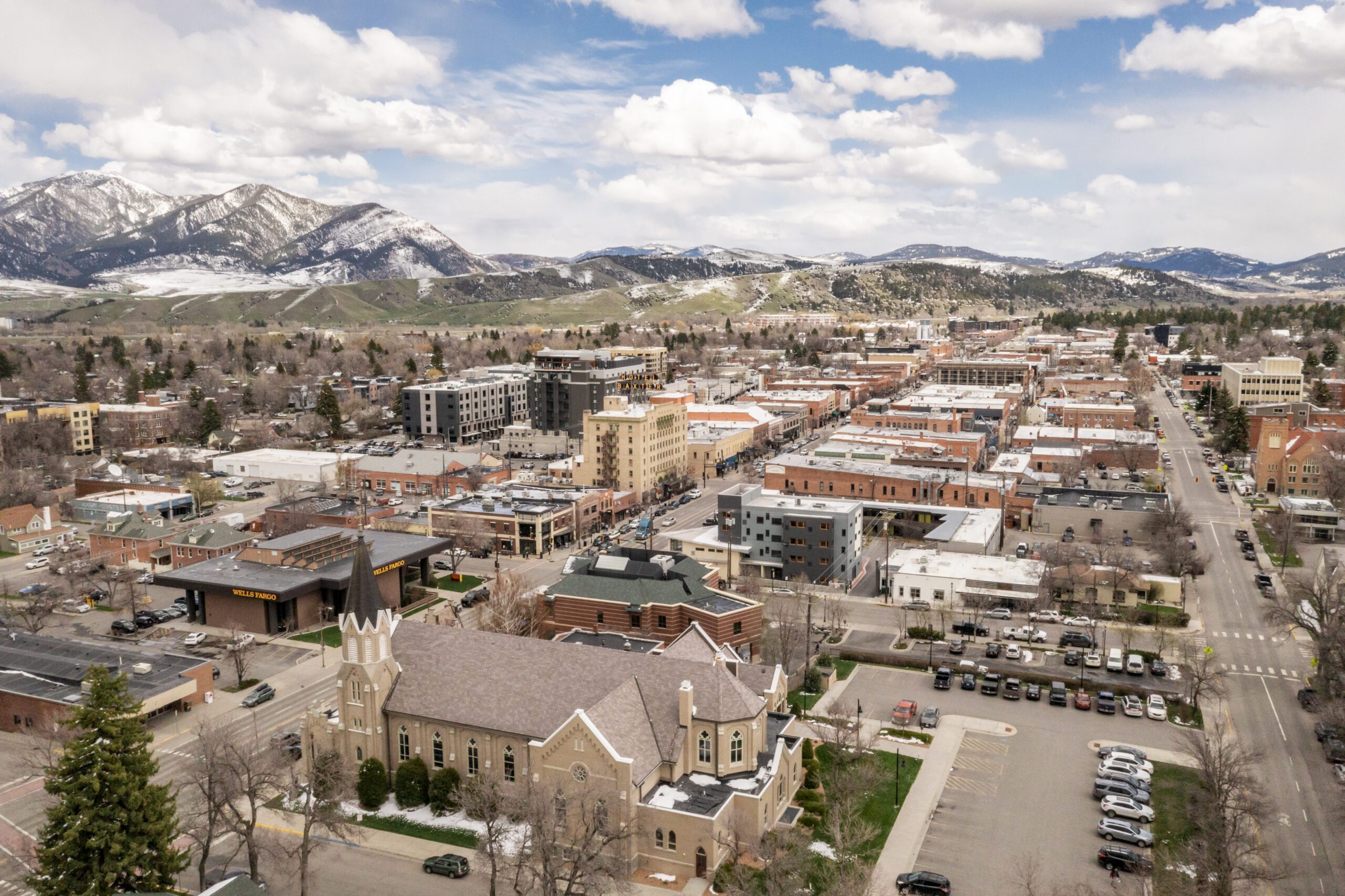By Maria Wyllie Explore Big Sky Associate Editor
A farrier pulls a hot orange horseshoe from his forge and rests it on the anvil. At approximately 1,800 degrees, the steel is now malleable, and he carefully rotates the shoe, striking it deftly with a hammer.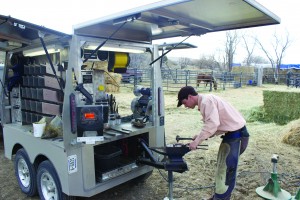
The young man speaks not a word, working with total concentration of mind and body. If it weren’t for his modern-day smithy and pickup truck, Josh Stanley could easily belong in a century past.
The history of the farrier is interwoven with the history of man and earth, and of war, culture and money. This ancient art form likely began when the Celts first nailed rims of iron to their horses’ feet around 400 B.C., according to Hickman’s Farriery, a working reference for farriers. Archaeologists have found horseshoes in Celtic graves, where horses were often buried alongside their masters.
Gradually the practice extended through Gaul and made its way to Britain by 450 B.C., and much later to America in the 18th century.
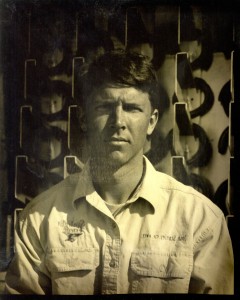 Stanley, originally from Memphis, Tennessee, has been shoeing horses in the Bozeman area since 2006. Just 30-years-old, he’s one of the busiest farriers around.
Stanley, originally from Memphis, Tennessee, has been shoeing horses in the Bozeman area since 2006. Just 30-years-old, he’s one of the busiest farriers around.
A farrier must carry his knowledge in his hands, he says. “So much of our work depends on being able to feel the foot – not just see.” A Certified Journeyman Farrier, Stanley likes to explain the shoeing process to clients – how a particular hand-forged shoe affects the foot and overall health of a horse.
This type of knowledge wasn’t part of a farrier’s work until the early 1800s, when British scientists began studying how the anatomy of a horse’s foot relates to its function. Up to that point, forging shoes and shoeing horses was simply the art of a skilled craftsman. Once this information was adopted, a respected London livery company called the Worshipful Company of Farriers instituted a process for examining and registering horseshoers in 1890. Soon, apprenticeships, traveling farriery schools and competitions became an industry standard.
In America, however, such standards were never adopted. The practice of shoeing horses reached its peak in the early 1900s when horses were used for everything from transportation and farming to the U.S. Cavalry during the expansion of Western settlement, according to The Principles of Horseshoeing II.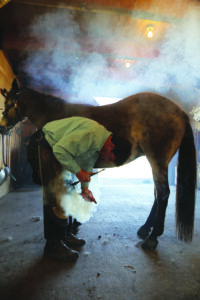
“It used to be a huge industry, and farriers and vets were one and the same,” Stanley explained on the drive between jobs in Three Forks. “Some of the best minds in the world were involved in farriery to keep the wheels of commerce turning.”
But with the rise of mechanization and the dwindling number of farms, commercial horse use in the United States declined. Even so, riding grew as a popular leisure activity in the second half of the century, keeping the trade alive.
—-
Although equine use is continually evolving, little has changed in the science of horseshoeing for most farriers.
“Most of what we know now, we knew 110 years ago,” said Earl Craig, President of the Montana Professional Horseshoers’ Association. “Diagnostic equipment and drugs are what’s improved, but in general, the basic job is similar to what it [always] was.”
With no legal certifications required to shoe a horse in America, continuing education is vital in preserving the trade and maintaining a high standard, says Bryce Kawasaki, Director of the Montana State University Farrier School in Bozeman.
Established in 1970, the program is one of the oldest in the country and draws students both nationally and internationally. Combined with the area’s numerous ranches and affluent equine community, it has made Bozeman a mecca for horseshoers.
This has helped keep the bar high among Gallatin Valley’s vibrant community of horseshoers, says Tom Wolfe, who directed the school for 30 years before handing the reins to Kawasaki in 2013. Many are eager to learn more, he said, and rather than simply tending to their own work, their shop doors are always open.
“The thing that’s exciting is the camaraderie,” said Wolfe, who still maintains a strong client base in and around Bozeman.
Stanley says working together helps shoers advance further, attributing his own success in part to Wolfe, whom he calls a horseshoeing master.
“Tom encouraged students to try and find someone to ride around with,” he said. “He knows all the horseshoers who should be known.”
Organized functions like the Bozeman Farrier Clinic and Contest, held as part of the city’s annual Winterfest, also help disperse knowledge. The third annual event last winter drew farriers from around southwest Montana, Idaho and Wyoming to compete and learn new techniques.
“It’s for fun,” says Stanley, who competes around the country and the world with the American Farriers Team.
In one competition, farriers are given an hour to make a shoe from bar stock and then evaluated on how closely the shoe compares to the judge’s sample shoes. The contests can help farriers become more efficient, and also serve as a platform for their work to be critiqued.
—-
Another Montana horseshoer, Katie Cosgriff, has taken a different path. A fourth generation farrier from Big Timber, Cosgriff is less interested in the tradition and artistry behind horseshoeing.
“There is a lot of blacksmithing and art in forging steel shoes,” she said. “I’m more into hoof function and internal structures.”
Cosgriff has been shoeing horses with her father as long as she can remember. A graduate of the MSU Farrier School, she holds an animal science degree and a human biology degree from MSU-Bozeman, a doctorate in chiropractic from the University of Western States in Portland, Oregon, and is board certified by the International Veterinary Chiropractic Association.
Even so, she says establishing herself in such a competitive arena wasn’t easy. “When I started out, I’d shoe whatever I could get,” she said.
Now with 18 years of professional experience, Cosgriff, 37, is perhaps an exception to a lack of innovation in the trade. She works almost exclusively on performance and lame horses, and has traveled to Germany to work with a veterinary farrier team using a synthetic shoe that allows a hoof to function like it does barefoot, but with protection.
Cosgriff says her chiropractic knowledge – as well as a strong back – helps with the physical aspects of her work. “When you’re a female and you’re smaller, there’s a lot of horsemanship and finesse that goes into it. It’s not about being stronger than the animal.”
In a similar way, she creates a therapeutic environment for her clients – both human and horse.
“Oftentimes the horse will have the same problem as the rider,” Cosgriff said, explaining that if the rider bears weight on one side of her body when riding, the horse will too, thus creating asymmetrical movement that can lead to problems and/or injury. Traveling with a portable massage therapy table, she’ll work on both trainers and horses.
Cosgriff is not alone as a woman farrier.
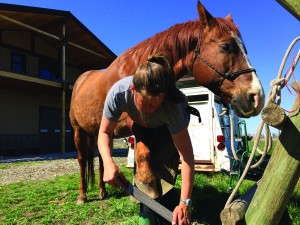 Kalispell, Montana native Vanessa Shaw was working as a real estate appraiser before she took her hand at the anvil.
Kalispell, Montana native Vanessa Shaw was working as a real estate appraiser before she took her hand at the anvil.
“Like a bolt of lightning, it struck me,” Shaw said. “I went out to ride with my friend … She let me pull a horseshoe, and it was the hardest thing I had ever done. I had just run a 50-mile race, and it was harder than that. I was hooked.”
Shaw soon quit her job and attended the MSU Farrier School, then apprenticed with Wolfe as an advanced student. Today, she runs her own business, Shaw’d Horses, based out of Bozeman, but loves working alongside her peers.
“Every farrier has been so helpful,” she said. “If I have a question, I can call anyone or ride along with anyone. It’s such an awesome community to be a part of.”
Sometimes, she says, a group of farriers including Wolfe and Stanley will travel to guest ranches around Montana and Wyoming and shoe a whole string of horses. They’ll make just enough to pay for the trip, but it isn’t always about the money.
This story was first published in the summer 2014 Mountain Outlaw magazine.




